SEO article writing needs solid writing abilities to make an article engaging and simple to read while employing search engine optimization. The audience of your website will increase due to the careful positioning of key terms and key phrases in the content.
Following are the steps that can be followed to write better SEO-Friendly content:
Make an Overview of Your Article
A key component of SEO writing is developing a content blueprint. The writing phase is sped up and made simpler with an outline, ensuring high-quality standards.
Filling in essential SEO data, such as typical queries associated with a specific term, is a step in outlining. Choosing your article’s header, subheadings, objectives, and approach angle is a further element in the procedure. What separates or defines your piece from the rest on the market?
Choose Your Keywords
Choosing which keywords to pursue is the primary step when generating new information. Keywords are “search terms or phrase” that we type in Google or other search engines. For example, if you are looking for a SEO service, you may type in search engines “SEO agency near me”.

Wordstream.Com FREE Keyword Research Tool
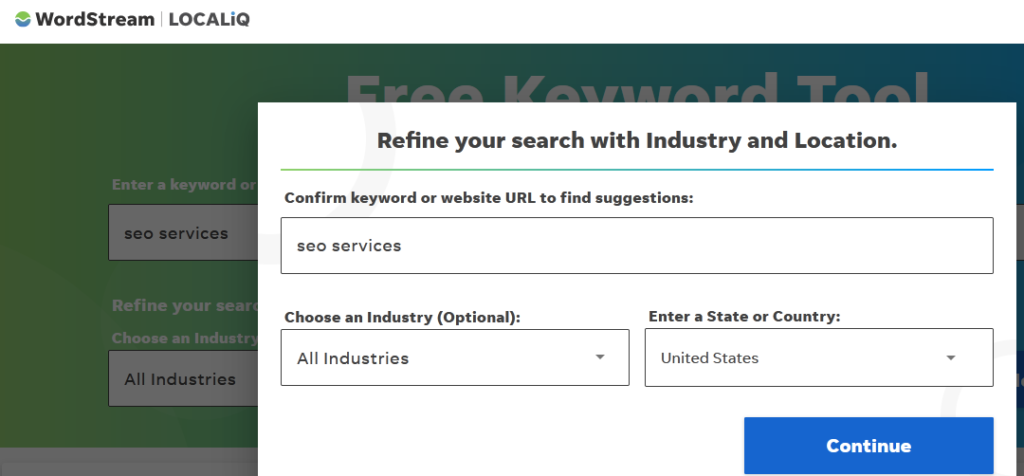
Google Keyword Planner FREE Keyword Research Tool
You need to sign-in to your Gmail/Google account to get access to this free tool.
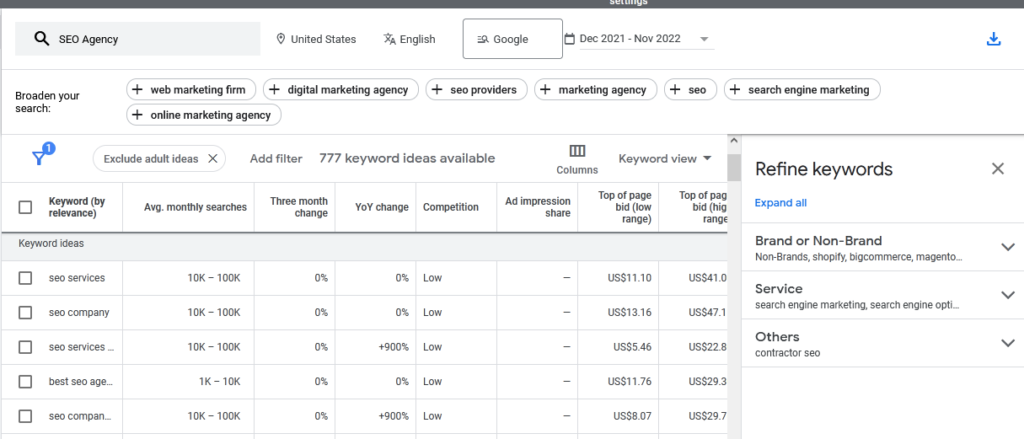
SERanking.com Paid Tool (Minimum $18.72/month)
If you want to find the keywords your competitors are ranking for a paid tool like SERanking is perfect.
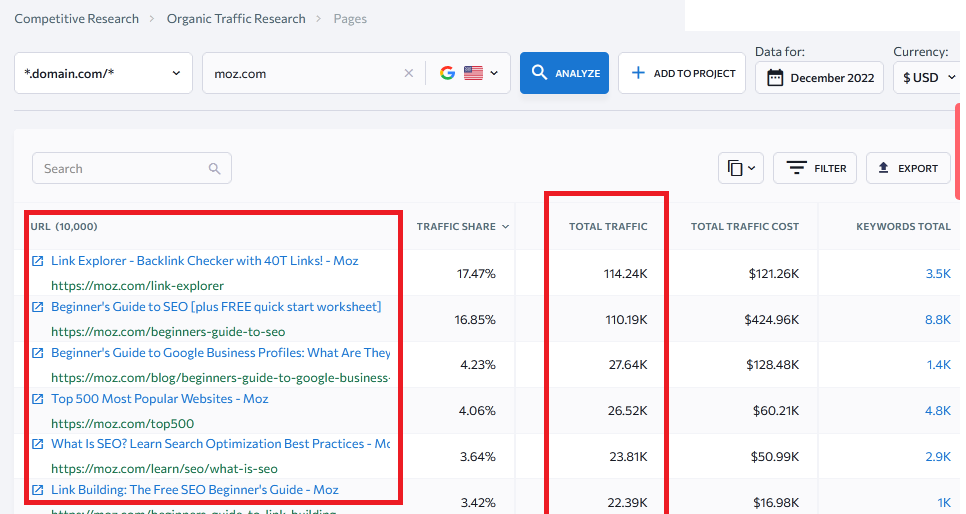
SEMRush.com Paid tool (Minimum $119.95/monthly)
SEMRush is very expensive but a great tool. You can find “Search intent” of keywords; it tells the intention of the person who is searching for. For example, “SEO services” intent is Commercial as people type this sort of search to find a service provider. While anyone types “SEO” in search engines, the intent is informational; they want to learn – “what is SEO”.
The tool has another cool feature – it will show questions related to the keyword, helping you find the best topics to write on.
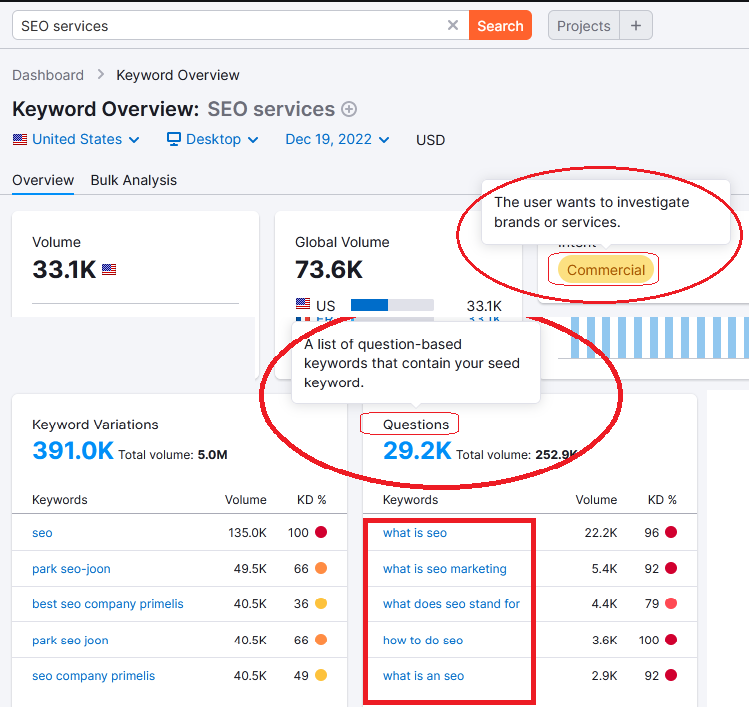
Topic Research Is Crucial
For SEO writing, topic analysis is highly important. It can assist you in choosing the keywords you want to promote and then give you suggestions for what kind of material to write. You can spy on your competitor’s high traffic generating articles/pages using a SERanking Competitive Research tool. How to find the competitors? SERanking keyword research tool automatically shows you competitors of the given keyword.

You can do a similar thing in SEMRush too:
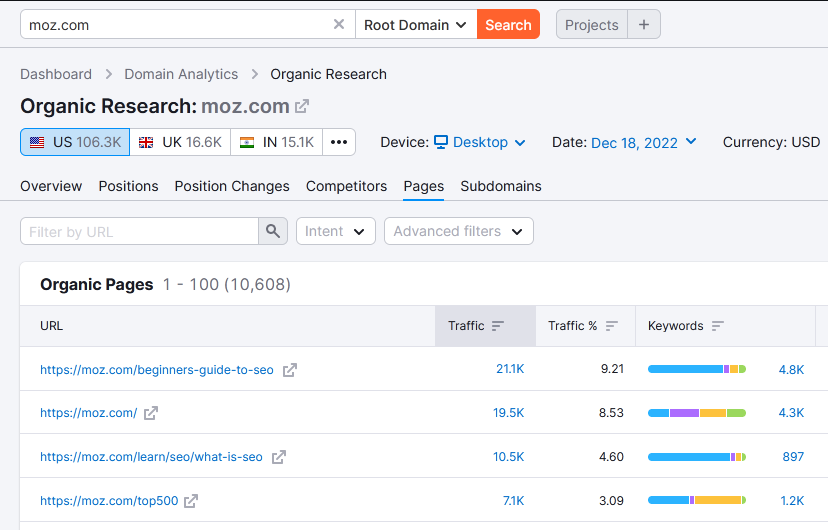
To find topic/title ideas for free, type in the keyword on Google. And look for the “People also ask” section. You can expand to get more ideas/questions.
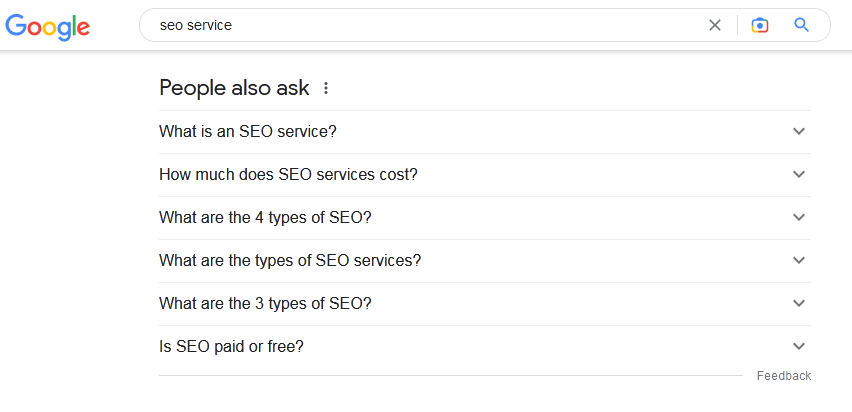
Write the Text
It’s time to commence writing material. What additional information do you require – you now know what your opponents have written, have a topic, and understand which keywords to use in your data. It is a good idea to compile a long list of all possible sub-titles from the top 10 articles positioned on Google for a specific topic search. You will find that not all websites list all the sub-titles; you can cover all of them in one place with better information which are missing by those competitors. Readers will now find an all-in-one article, meaning all information in one website.
From my personal experience, I found that an article that talks briefly about cost/pricing of services or products rank very fast in search engines and gain top organic traffic from search engines. For example, “How much does it cost ….”.
You must be certain that you comprehend the user’s objective. In other words, your material should be relevant to the specific terms that consumers desire to read.
Going back to the Search engine results and looking for trademarks is one approach to learning more. For instance, if you are creating an article regarding “SEO tools,” practically all of the results will be lists of “Free Tools.”
This indicates that Google has discovered that individuals’ intentions when searching for tools, even when they omit the word “Free,” are to pursue categories of free tools.
Include Your Keyword in the Opening Sentence
Here is a helpful tip that the majority of SEO writers ignore. You must revisit and review your article intro after the initial draft is complete. You want to be certain that your introductory paragraph contains your target search term.
The explanation is that Google consistently values content just above the fold and higher on a site as being more significant than stuff located further down on the page.
By including your keywords in the opening paragraph, you provide Google with a clear indication of the terms this page should be associated with.
Compose for Your Readership
Create material that speaks to the concerns or aspirations of your intended audience. All articles should be linked to the industry, even if they aren’t about your goods or services.
Keep an Eye Out for Keywords
Within your expertise, you can create a keyword spreadsheet containing the most popular key phrases and words individuals use while googling. You must comprehend your intended audience’s needs and the terms and words they are looking for.
Ensure That the Article Contains the Desired Keywords
By identifying the repeated key phrase in an article or page, search engines may determine its topic. Thus, SEO benefits from the key phrase having a strong density. This indicates that your keywords should flow smoothly throughout your text. The recommended keyword density ranges from 0.5% to 3%. Each paragraph should start with the keyword and be included in the body at least once. Each subtitle (Known as H2, H3, H4) should include the keyword, IF POSSIBLE.
A simple piece of advice is to maintain the key phrase in your post at the proper level because everything should be in proper proportion. When there are too few, the ranking suffers; when there are too many, search engines may penalize you.
Produce Excellent Content
You must write high-quality content and content that is worthy of the readers’ time. You must try to incorporate statistical research or study outcomes in plain text from various sources like Statistics.com into your article to increase trust and uniqueness.
Organize Your Posts
Even if your post has excellent material, a disjointed format can make it easy for readers to miss. Utilizing headlines with keywords and dividing your text into shorter paragraphs allows for a simple skim to retain the reader’s interest.
Write Clearly
Skim more excellent content from reliable sources to hone your reading skills and develop a taste for engaging writing. Use paragraphs and phrases that are brief and to the point. Avoid Fluff (unnecessary details), make it zero Fluff article.
Select Only Relevant Links
Create internal links, linking to appropriate pages or articles in your website from where detail reading is possible for the readers. For example, if the article talks about pricing, create a link to the pricing page. The number and caliber of links (to other sites) on your website are taken into consideration by search engine algorithms. Search engines favor links from well-known websites above those from unreliable blogs.
Lengthen the Material So That It Counts
Research suggests that long articles, 3500+ words, get 300 times more traffic. In practice, search engines favor lengthier publications. Although 600 words aren’t poor, it would be great if you could go to 1000 or maybe more. Longer articles provide viewers with far more information and keep them on your page longer.
Final Step – Setup SEO
Great article would not rank number one if your article Meta title and description are not optimized. Search engines only show the title and description on the SERP (result page). This proves the importance of SEO friendly Meta in positioning a website in search engines.
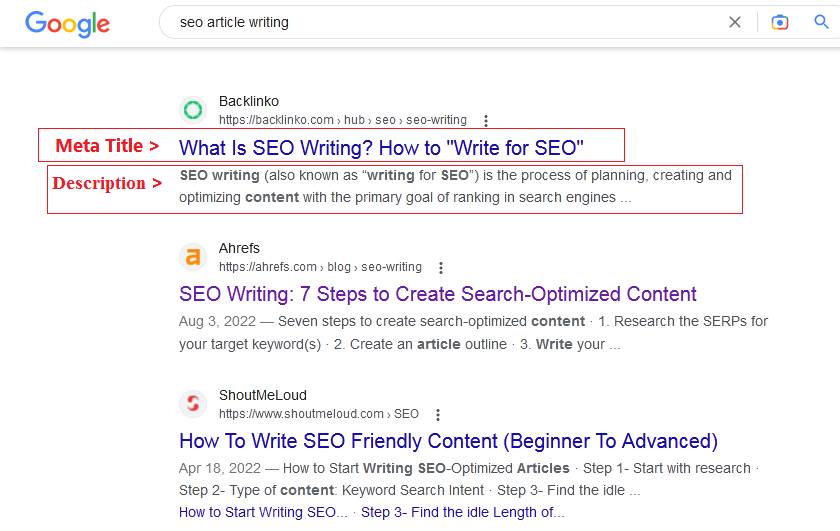
A title should not exceed 60 characters, while we can use maximum 160 characters for a Meta description. Most search engines would not show beyond the length, on the SERP. Both of them must include the keywords and give a clear summary of the entire article within the set limited characters along with a call to action if necessary.
Here is the HTML code for Meta Title and description (They are hidden from the actual page; you need to find them on the page source code).
<title>Place the meta title here</title>
<meta name=”description” content=”Place the meta description here” />
The opening heading (main title) must be converted into H1, other subtitles are H2 and subtitle’s subtitles are H3, H4 and so on, in a hierarchy.
Avoid large images to avoid the loading speed issue of your page, search engines love optimized images. You can use free tools like tinypng.com to optimize image size. Please use a meaningful image name (seo-service.JPG) instead of 123.JPG.
Add alt tags on your image – ALT (alternative text) describes the function of an image. Use of keyword rich URL is highly important.
In fact, the SEO setup part is for the SEO specialist and not for the writer. You can leave the SEO part to the SEO experts and focus more on writing quality content for readers.
Good luck!



